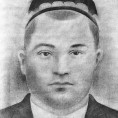Categories of prisoners
Jews in Auschwitz
Until early 1942, the Nazis deported to Auschwitz only a relatively small number of Jews, who were sent there along with the non-Jewish prisoners, mostly Poles, who accounted for the majority of the camp population until mid-1942.
Poles in Auschwitz
After the liquidation of the Polish state and its institutions, the fundamental goal of German policy in occupied Poland was the exploitation of material and labor resources, and the removal of the local Polish population and ethnic minorities. This was done through expulsion and systematic extermination. The Polish lands were to be completely germanized, through German settlement in the depopulated area.
The first transport of Poles, 728 political prisoners, deported by Germans from Tarnów prison, reached the Auschwitz camp on June 14, 1940. This is why the Polish Parliament instituted June 14 the National Remembrance Day of the Victims of German Nazi Concentration Camps and Extermination Camps.
Sinti and Roma (Gypsies) in Auschwitz
The Nazi Germans regarded Sinti and Roma (Zigeuner, as they were referred to in official German documents of the period) as enemies of the Third Reich, and therefore sentenced them to isolation and extermination.
Soviet POWs
The Germans began sending Soviet POWs to Auschwitz shortly after the beginning of their war against the Soviet Union (June 22, 1941). According to prisoner accounts, these transports were already appearing in Auschwitz in July. At first, the arriving POWs were usually shot in the gravel pits near the camp.
Jehovah's Witnesses
Aside from brief mentions, the literature on the history of Auschwitz Concentration Camp does not take account of the Jehovah’s Witnesses (referred to in the camp records as Bible Researchers) who were imprisoned because of their religious convictions. These prisoners deserve closer attention because of the way they managed to hold on to their moral principles under camp conditions. This was a result of their religious convictions, based on the Bible and on opposition to all forms of violence.
Other ethnic groups
In addition to Jews, Poles, Gypsies, and Soviet POWs, about 25 thousand prisoners of other nationalities were imprisoned in Auschwitz. Research on the story of these other nationality groups is still in progress, and the statistics about them should therefore be treated as fragmentary, conservative estimates based on a limited number of cases.



